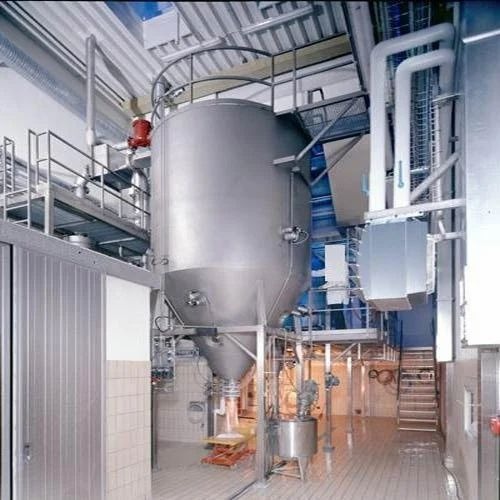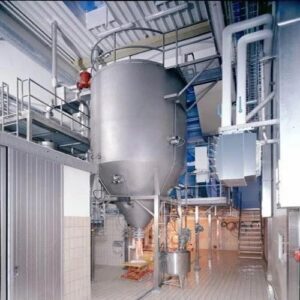Prefeasibility Report on a Precipitated Silica Production Plant Setup
IMARC’s new report titled “Precipitated Silica Production Cost Analysis 2025: Industry Trends, Plant Setup, Machinery, Raw Materials, Investment Opportunities, Cost and Revenue,” provides a comprehensive roadmap for setting up a precipitated silica production plant. It covers vital aspects such as raw materials, equipment, labor, utilities, and capital investment. The precipitated silica production cost analysis helps stakeholders assess operational expenses and potential returns, enabling informed financial planning. This report is a valuable resource for entrepreneurs, investors, consultants, and industry professionals seeking to understand cost drivers and optimize production setup.
What is Precipitated Silica?
Precipitated silica is a highly versatile, synthetic form of silicon dioxide produced by the reaction of an alkali metal silicate with an acid. It appears as a fine, white powder with a large surface area and porous structure, making it ideal for a wide range of industrial applications. Its unique properties, such as excellent absorption, reinforcement capabilities, and anti-caking characteristics, make it a key ingredient in products like rubber, plastics, paints, adhesives, toothpaste, and food additives. Precipitated silica is valued for its ability to enhance texture, durability, and performance across multiple industries.
Request for a Sample Report: https://www.imarcgroup.com/precipitated-silica-manufacturing-plant-project-report/requestsample
Trends and Drivers in the Precipitated Silica Market:
The precipitated silica market is experiencing steady growth driven by rising demand from the automotive, construction, and personal care sectors. Increasing production of tires, coupled with a growing preference for eco-friendly and high-performance materials, is propelling market expansion. Innovations in silica formulations, such as silica grades with improved dispersion and reinforcing properties, are creating new opportunities for end-use industries. Additionally, the surge in the personal care and cosmetics market, especially in toothpaste, skincare, and detergents, is boosting silica consumption. Regulatory focus on safety and sustainable manufacturing practices is further shaping market dynamics, encouraging manufacturers to adopt greener processes. The combination of technological advancements and expanding industrial applications is expected to sustain the growth trajectory of precipitated silica globally.
Key factors for setting up a precipitated silica production plant:
- Market Research
Market research in the precipitated silica industry provides critical insights into market size, demand patterns, competitive landscape, and emerging opportunities. It helps businesses understand consumer preferences, regulatory requirements, and technological trends, enabling informed strategic decisions. Research reports often include analysis of production capacities, raw material availability, pricing trends, and regional growth prospects. For manufacturers and investors, this information is invaluable for planning capacity expansions, product innovations, and market entry strategies. By leveraging comprehensive market research, stakeholders can mitigate risks, optimize operations, and capitalize on growth opportunities in the dynamic precipitated silica market.
The report offers an exhaustive overview of the global precipitated silica industry, including a detailed breakdown by segments and regions within the sector. It also includes in-depth analyses of prices involved, market trends and historical data and forecast.
- Market Forecast
- Price Analysis
- Market Breakup by Region
- Market Breakup by Segment
- Market Trends
- Planning and Designing
A detailed and up-to-date business plan is indispensable for mapping out the steps to establish and operate a precipitated silica production facility. This report offers in-depth details about the process flow and the various unit operations involved in a precipitated silica production plant.
- Technical Tests
- Quality Assurance Criteria
- Mass Balance and Raw Material Requirements
- Unit Operations Involved
- Product Overview
- Legal and Regulatory Compliance
Understanding and complying with the intricate framework of business laws and regulations is a vital aspect of establishing a precipitated silica production facility. This requires a detailed knowledge of legal obligations, such as labor laws, environmental standards, tax policies, and industry-specific regulations.
- Plant Requirements and Costs
The report offers a detailed location analysis, including insights into land selection, key criteria, location importance, environmental considerations, and associated costs for establishing a precipitated silica production facility. It also provides information on plant layout and the factors that impact its design.
- Human Resource Requirements and Costs
- Utility Requirements and Costs
- Transportation Requirements and Costs
- Packaging Requirements and Costs
- Raw Material Requirements and Costs
- Machinery Requirements and Costs
- Plant Layout
- Land, Location and Site Development
- Hiring and Training
Effective workforce planning and recruitment strategies are critical for assembling a skilled and efficient team to manage a precipitated silica production plant. This process includes identifying the specific skills and qualifications needed for different roles and anticipating future staffing requirements based on production goals and business expansion.
- Developing Health and Safety Protocols
- Implementing Training Programs for Employees
- Complying with Labor Laws and Regulations
- Supply Chain Management
Building strong partnerships with suppliers and vendors is crucial to maintaining a dependable and cost-efficient supply chain. This requires choosing partners who can reliably deliver high-quality raw materials and components at competitive rates.
- Planning Logistics and Transportation Networks
- Implementing Efficient Inventory Management Systems
- Project Economics
This entails a thorough analysis of the costs associated with a precipitated silica production plant, covering capital expenditure (CapEx), operating expenditure (OpEx), income forecasts, taxation, depreciation, liquidity, profitability, payback period, net present value (NPV), uncertainty, sensitivity assessments, etc. In addition to this, it includes an in-depth review of financial assistance options and a comprehensive list of certifications necessary for establishing the plant.
- Financial Analysis
- Profit Projections
- Taxation and Depreciation
- Revenue Projections
- Expenditure Projections
- Operating Costs
- Capital Investments
- Marketing and Distribution Strategies:
Creating a robust marketing strategy and establishing strong brand positioning are vital for building a production plant’s market presence. This process includes conducting thorough market research to identify customer needs, preferences, and competitive trends.
- Identifying Distribution Channels and Sales Networks
- Leveraging Digital Marketing and E-Commerce Platforms
- Participating in Trade Shows and Industry Events
About Us:
IMARC Group is a global management consulting firm that helps the world’s most ambitious changemakers to create a lasting impact. The company excel in understanding its client’s business priorities and delivering tailored solutions that drive meaningful outcomes. We provide a comprehensive suite of market entry and expansion services. Our offerings include thorough market assessment, feasibility studies, company incorporation assistance, factory setup support, regulatory approvals and licensing navigation, branding, marketing and sales strategies, competitive landscape, and benchmarking analyses, pricing and cost research, and procurement research.
Contact Us:
IMARC Group
134 N 4th St. Brooklyn, NY 11249, USA
Email: sales@imarcgroup.com
Tel No:(D) +91 120 433 0800
United States: (+1-201971-6302)












